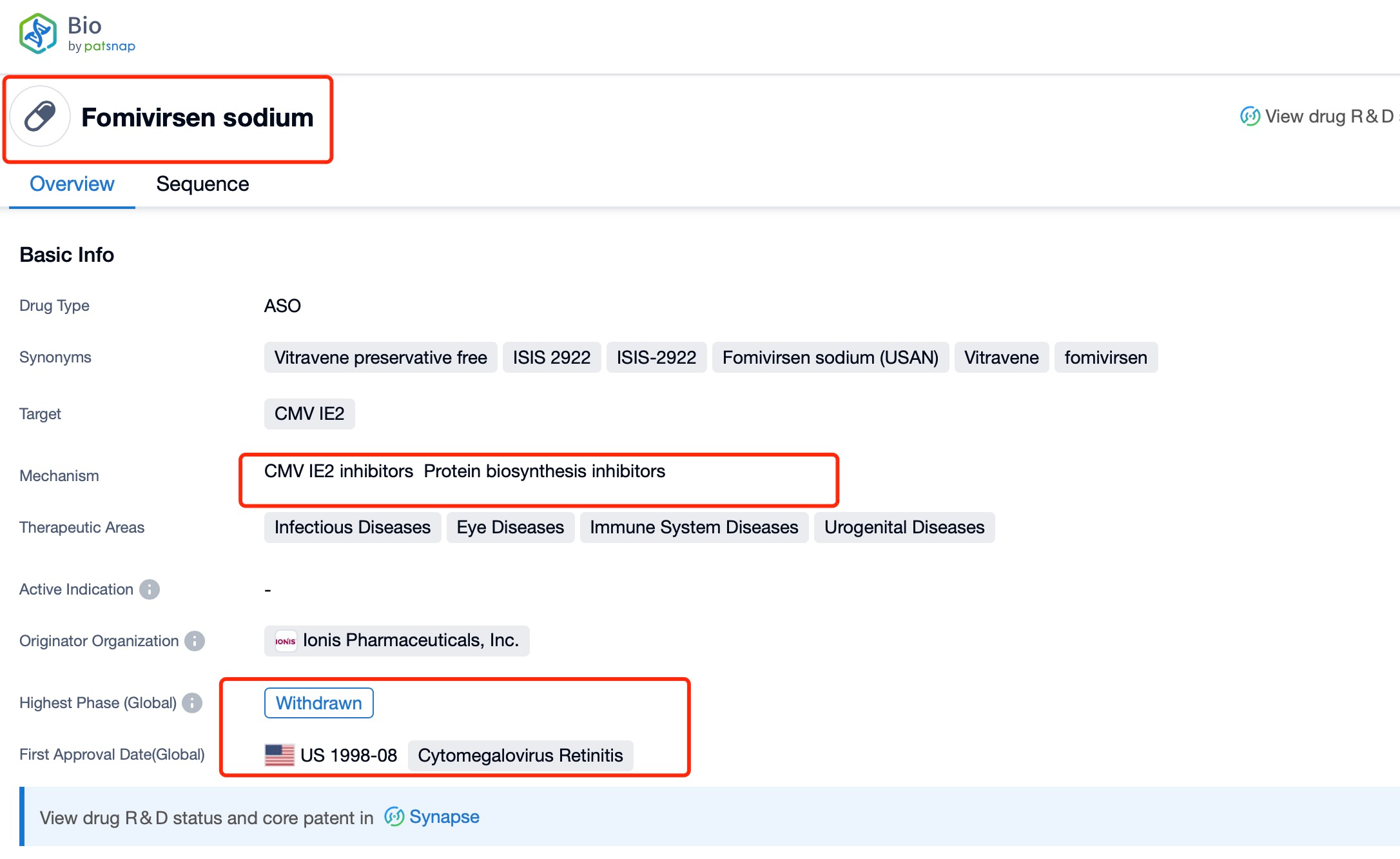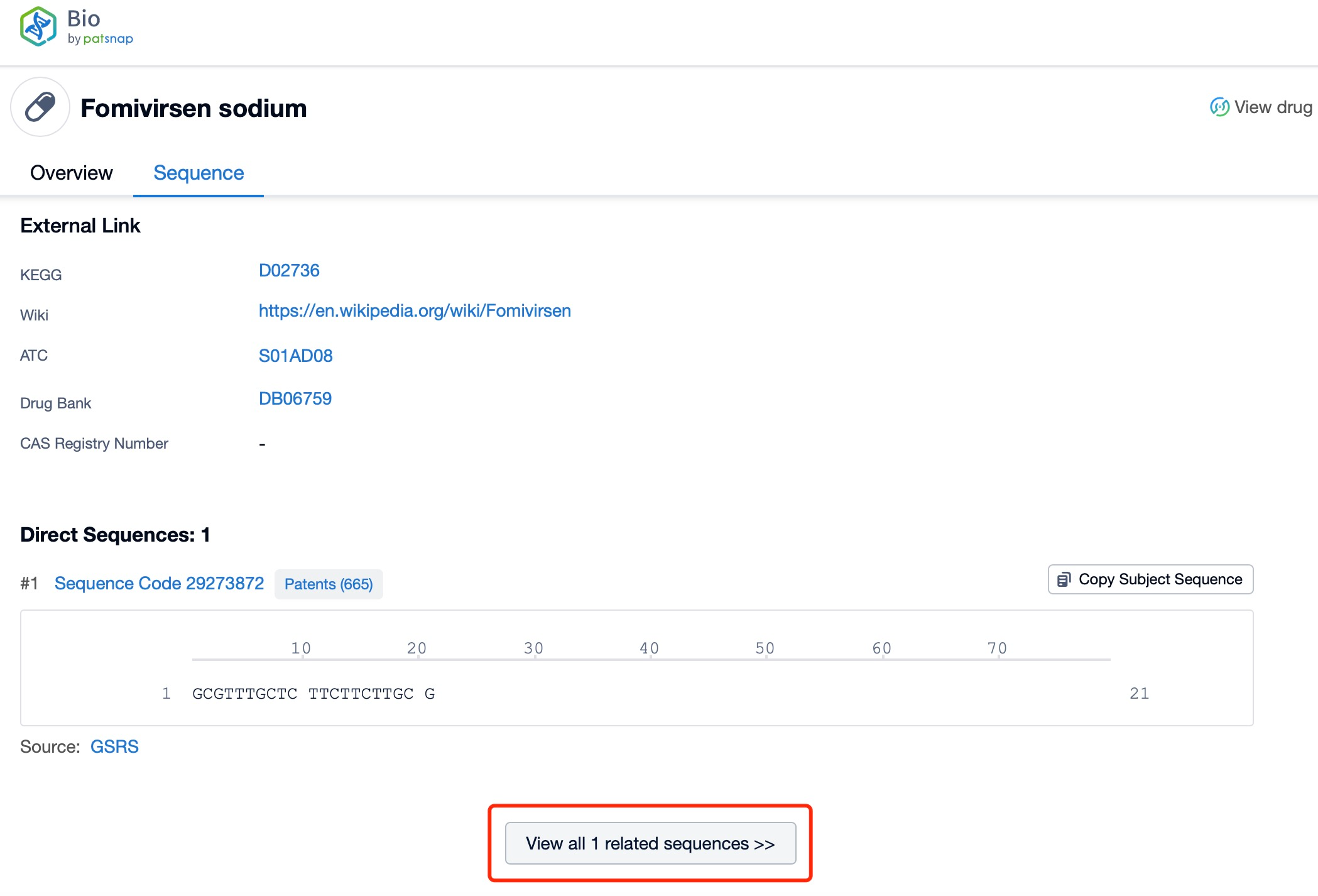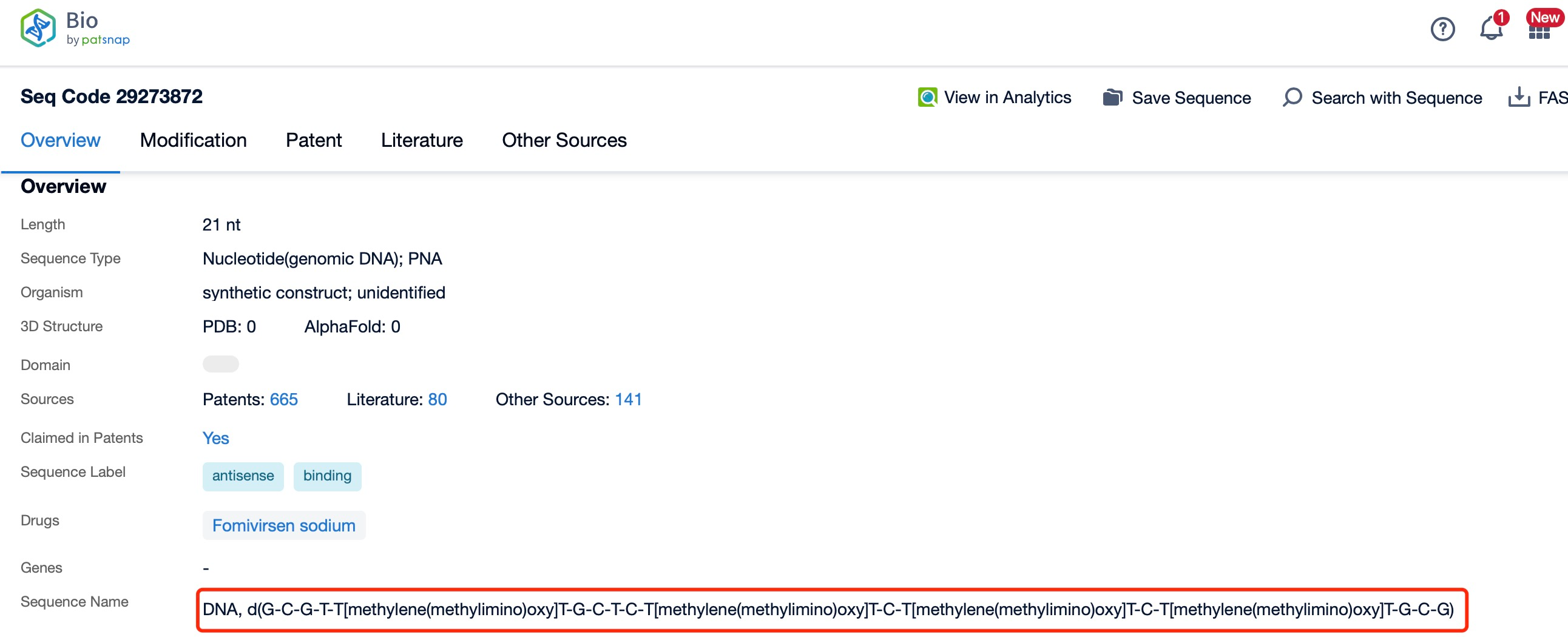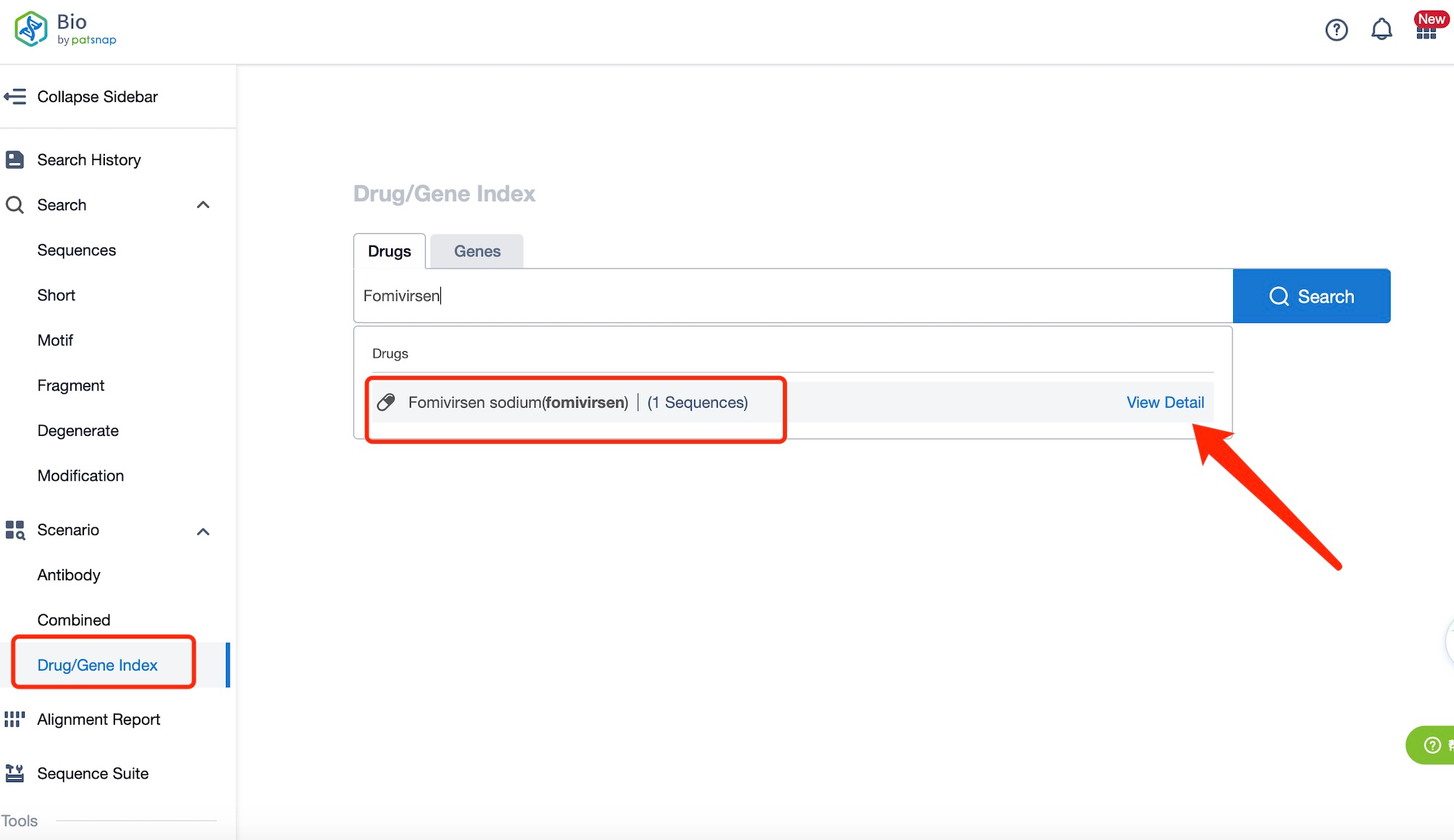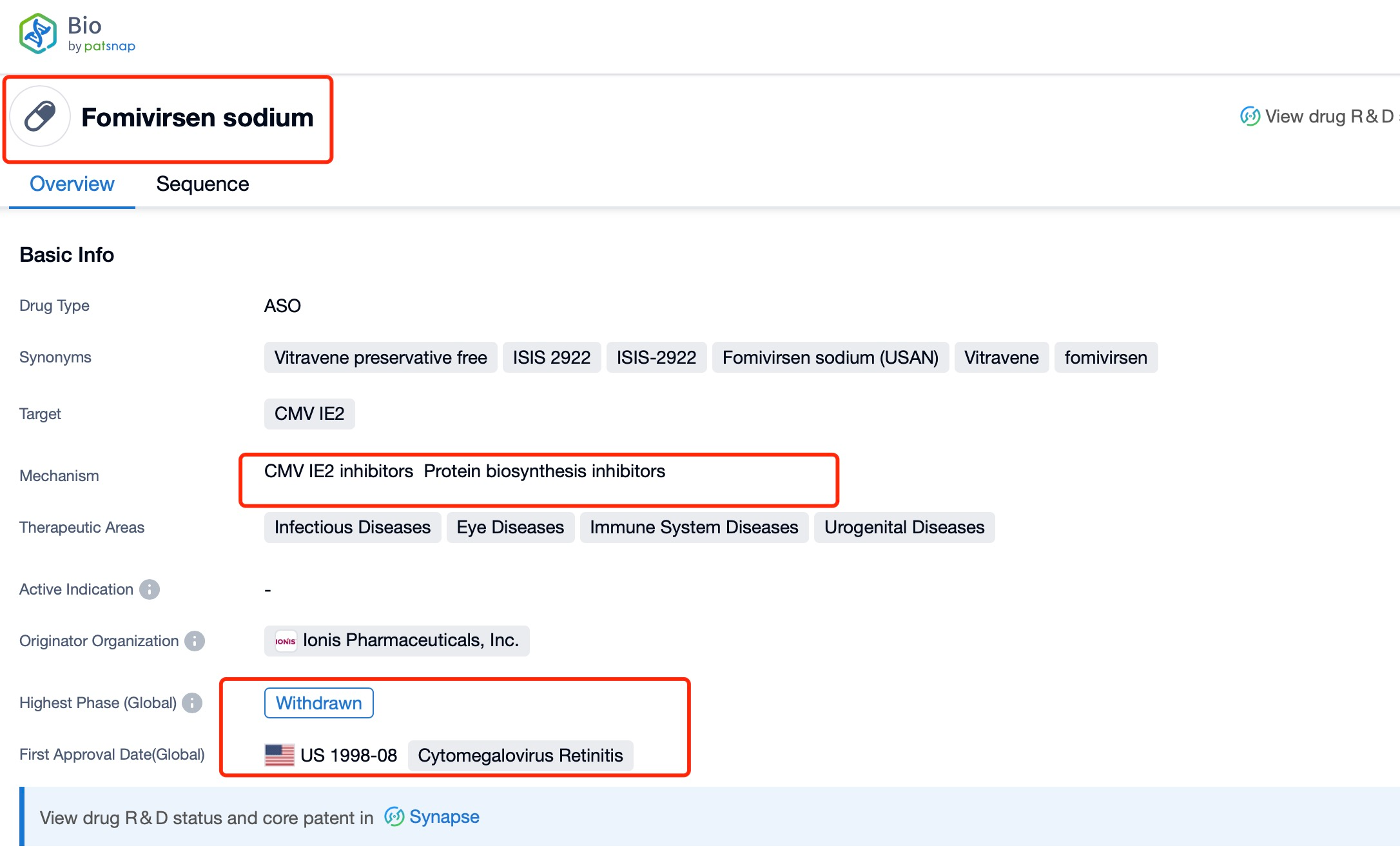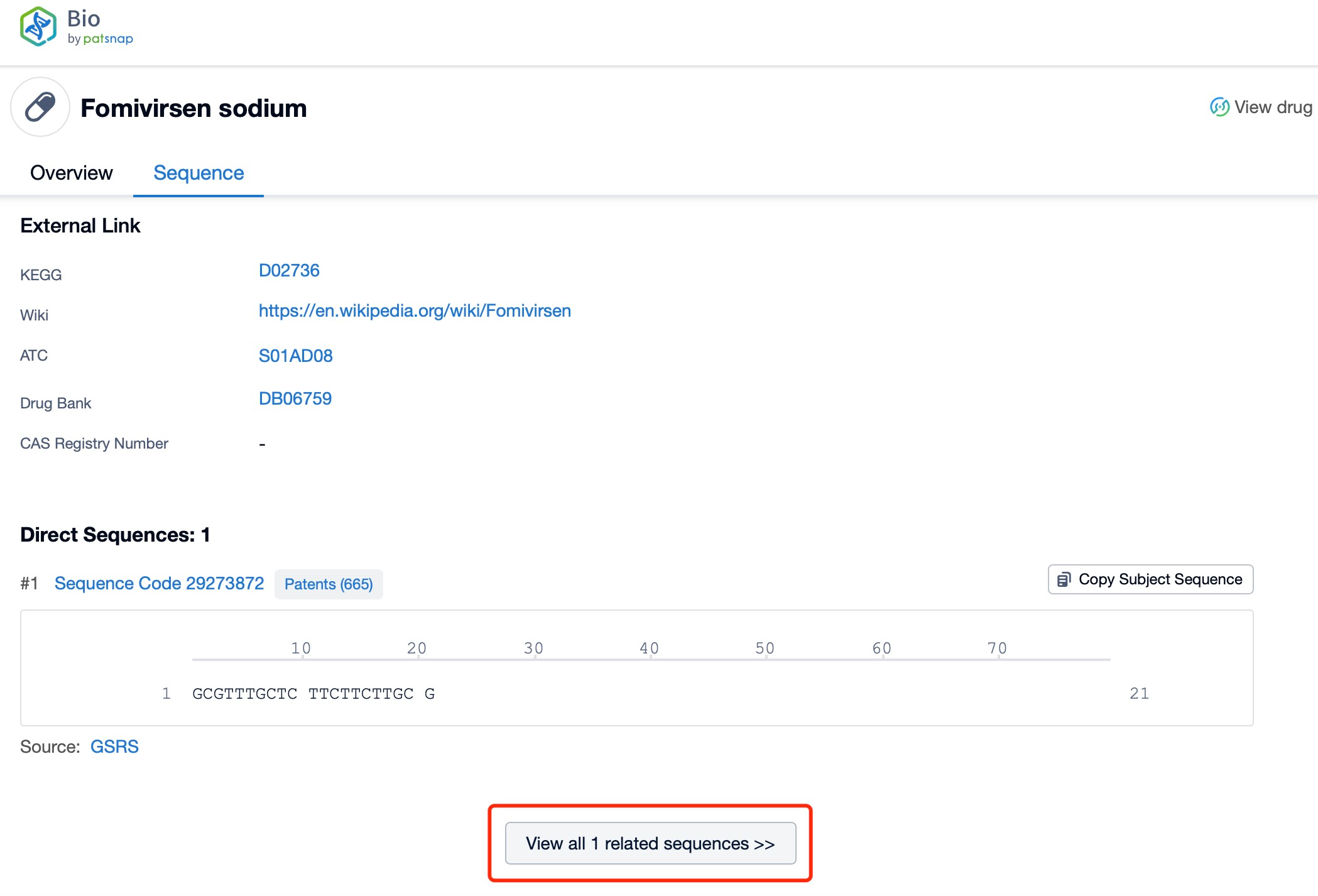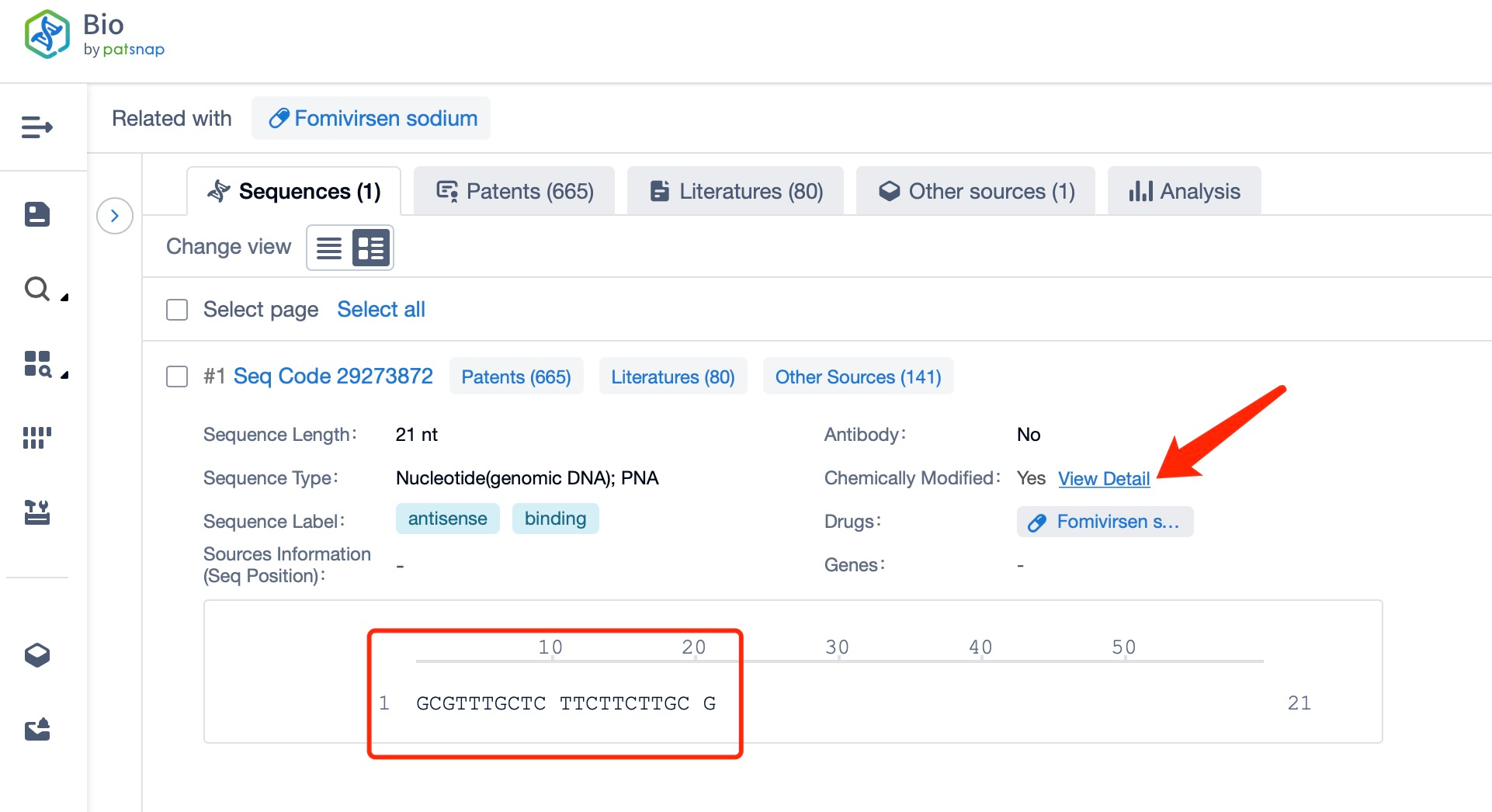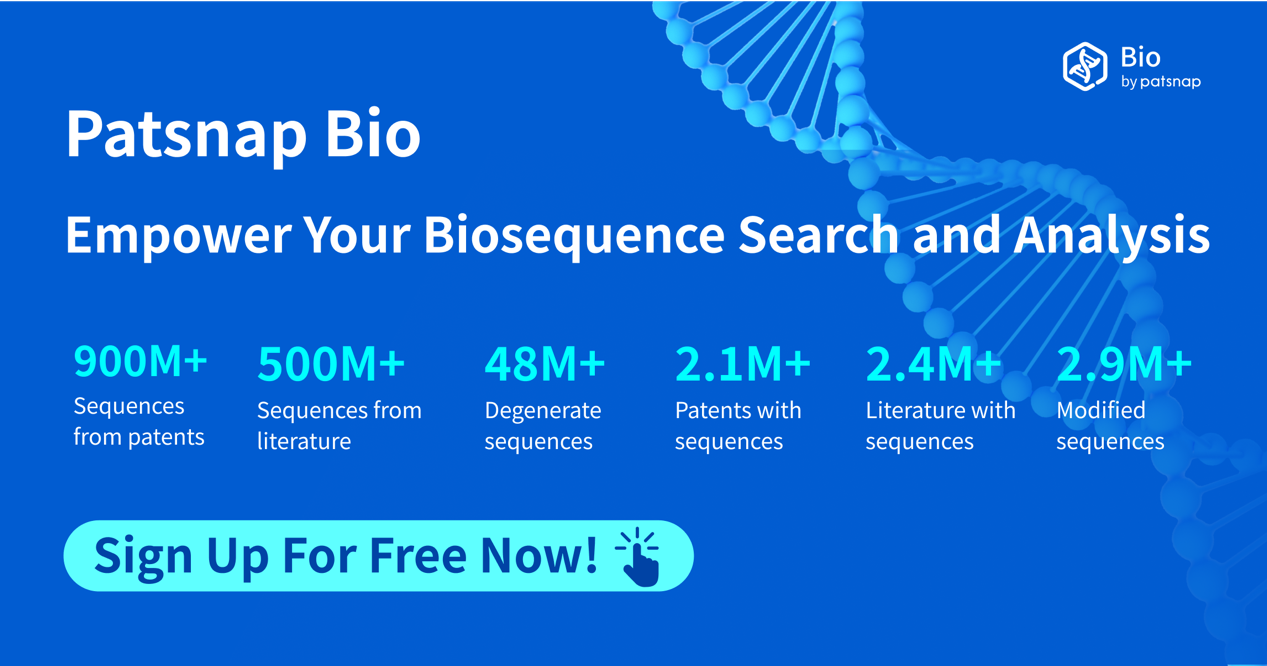How to find the sequence of Fomivirsen?
Fomivirsen, developed by Isis Pharmaceuticals (now known as Ionis Pharmaceuticals), is an antisense oligonucleotide that targets the messenger RNA (mRNA) of cytomegalovirus (CMV). CMV is a common virus that can cause serious complications in immunocompromised individuals, such as those with AIDS or who have undergone organ transplants. Fomivirsen is specifically indicated for the treatment of CMV retinitis, a condition that can lead to blindness in patients with AIDS. By targeting the CMV mRNA, fomivirsen aims to inhibit the production of essential viral proteins, thereby reducing viral replication and preventing the progression of retinal damage.
Summary of Research Progress of Fomivirsen
Fomivirsen works by binding to the CMV mRNA, leading to its degradation via RNase H-mediated cleavage. This prevents the synthesis of the viral proteins necessary for CMV replication, effectively inhibiting the virus and halting the progression of CMV retinitis. Fomivirsen is administered intravitreally, directly into the eye, which allows for targeted delivery to the site of infection. The drug has been approved by the U.S. Food and Drug Administration (FDA) and the European Medicines Agency (EMA) for the treatment of CMV retinitis in AIDS patients. Despite its approval, fomivirsen is no longer widely used due to the availability of more convenient and effective oral and intravenous treatments for CMV retinitis.
Globally, the competition in the CMV retinitis market has shifted over the years. Fomivirsen faced initial competition from ganciclovir, an antiviral drug that is effective against CMV and can be administered orally or intravenously. Ganciclovir, and its prodrug valganciclovir, remain the first-line treatments for CMV retinitis due to their ease of administration and broader spectrum of activity. Other antiviral drugs, such as cidofovir and foscarnet, are also available and are used in cases of ganciclovir resistance or intolerance. While fomivirsen offered a targeted and localized treatment option, the need for frequent intravitreal injections and the availability of more convenient alternatives have limited its use.
Clinical research on fomivirsen has demonstrated its efficacy and safety in treating CMV retinitis. Early clinical trials, such as the GANITE and VITRTUOS studies, showed that fomivirsen could significantly reduce the progression of CMV retinitis and improve visual acuity in treated patients. The drug was generally well-tolerated, with common side effects including ocular inflammation and transient increases in intraocular pressure. However, the need for frequent intravitreal injections and the associated discomfort and risks, such as retinal detachment, have led to a decline in its use. Ongoing and future research may focus on improving delivery methods and exploring combination therapies to enhance its clinical utility.
Sequence Characteristics of Fomivirsen
Fomivirsen is a 21-nucleotide phosphorothioate-modified oligonucleotide. The sequence of fomivirsen is specifically designed to bind to the CMV mRNA, targeting a region that is essential for viral protein synthesis. This sequence is optimized to ensure high specificity and efficiency in binding to the target mRNA, which is crucial for the drug's therapeutic efficacy and safety. The precise sequence of fomivirsen is a proprietary information, but it is known to be highly complementary to the target CMV mRNA, allowing for effective RNase H-mediated cleavage and degradation.
Chemical Modification and Species of Fomivirsen
The chemical modifications in fomivirsen include phosphorothioate linkages. The phosphorothioate backbone replaces one of the non-bridging oxygen atoms in the phosphate group with a sulfur atom, enhancing the stability of the oligonucleotide and protecting it from nuclease degradation. This modification is crucial for the drug's ability to reach and bind to the target mRNA in the eye. The phosphorothioate backbone also improves the pharmacokinetic properties of the drug, such as its half-life and tissue distribution, which are important for its therapeutic effectiveness.
The phosphorothioate modifications in fomivirsen provide several key advantages. First, they significantly enhance the stability of the oligonucleotide, allowing it to remain active in the cellular environment for a longer period. This increased stability is crucial for the drug's effectiveness in binding to and degrading the CMV mRNA. Second, the phosphorothioate backbone improves the pharmacokinetic profile of the drug, increasing its half-life and bioavailability. This means that the drug can be administered less frequently, which is beneficial for patient convenience and compliance. Third, the phosphorothioate modifications reduce the risk of off-target effects by enhancing the specificity of the oligonucleotide for its target mRNA.
The role of the phosphorothioate modifications in fomivirsen is multifaceted. They protect the oligonucleotide from degradation by nucleases, ensuring that it can reach its target in the eye. They also enhance the binding affinity of the oligonucleotide to the CMV mRNA, ensuring efficient and specific RNase H-mediated cleavage. Additionally, the phosphorothioate modifications improve the pharmacokinetic properties of the drug, such as its half-life and tissue distribution, which are essential for its therapeutic effectiveness. These modifications also reduce the immunogenicity of the oligonucleotide, minimizing the risk of adverse immune responses.
Summary and Prospect
In summary, fomivirsen represents a significant advancement in antisense technology and the treatment of CMV retinitis in AIDS patients. Its mechanism of action, involving the degradation of CMV mRNA, has shown promising results in reducing viral replication and preventing the progression of retinal damage. Despite facing competition from more convenient and effective oral and intravenous treatments, fomivirsen offered a targeted and localized treatment option. Future research may focus on improving delivery methods and exploring combination therapies to enhance its clinical utility. The sequence characteristics and chemical modifications of fomivirsen, including its phosphorothioate backbone, contribute to its stability, specificity, and efficacy, making it a valuable tool in the management of CMV retinitis. However, the need for frequent intravitreal injections and the availability of more convenient alternatives have limited its widespread use, highlighting the importance of continued innovation in the field of antiviral therapies.
How to find the sequence of an ASO?
In Patsnap Bio, you can find the sequence and latest research and development advances of all ASOs.
Taking Fomivirsen as an example, first click on the Drug/Gene Index on the Patsnap Bio homepage. Here you can search for sequence information by drug and gene names. Enter ' Fomivirsen ' in the search box and click to view the details. On the details page, you can find the basic information and research progress of Fomivirsen.
Click "View all related sequences" below the sequence information to search for and retrieve all biological sequences similar to this information.
Clicking on the sequence name will provide you with all the basic information of that sequence.
Patsnap Bio helps you turn weeks into minutes with cutting-edge AI-enabled tools built to master the complexities of sequence retrieval and automate IP analysis with precision and ease.
